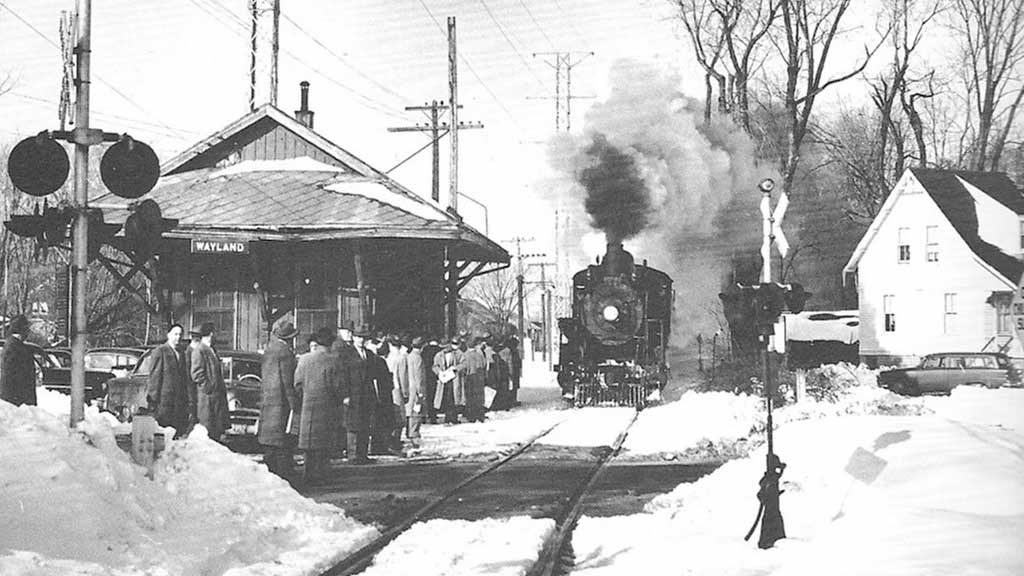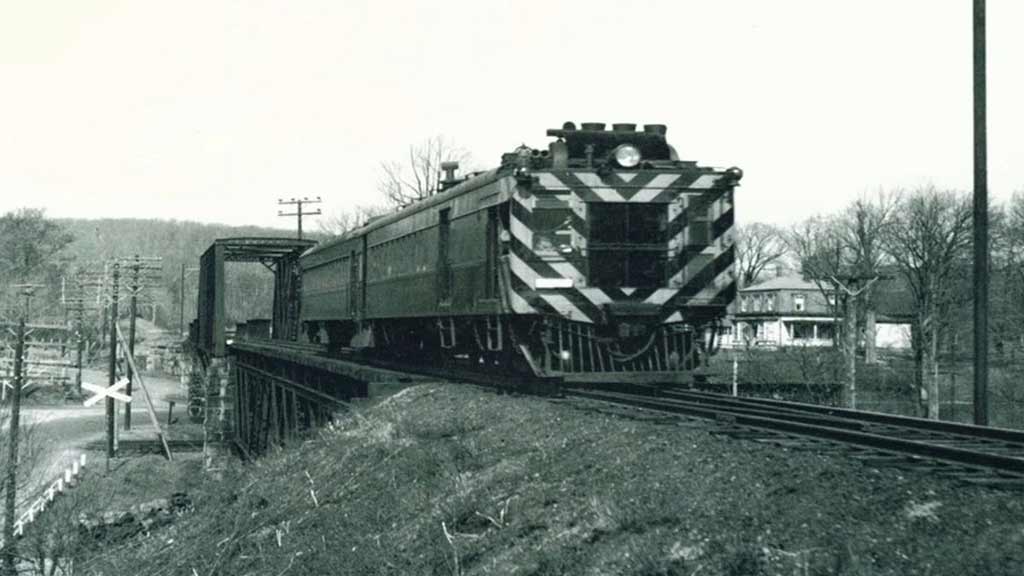Step back in time and immerse yourself in the rich history of the Boston Worcester Railroad. With over 2500 original negatives and study prints dating back to the late 1890s, this collection offers a fascinating glimpse into the construction activities, rolling stock, and stations of this iconic railway.
From the bustling city of Boston to the charming towns along the tracks, each image paints a vivid picture of a bygone era.
Explore the evolution of architectural and railroad history as you uncover the detailed documentation of stations in Framingham, Worcester, Pittsfield, and more.
Witness the growth of transportation infrastructure and the intricate network of rail facilities, including those linked to the Cunard Lines in East Boston.
Delve into black-and-white prints and photographs that capture the essence of a time when trains were the lifeline of these communities.
Historical Background of the Boston Worcester Railroad
The Boston and Worcester Railroad (B&W) holds significant historical importance as one of the earliest railroads in the United States.
Here’s a brief historical background:
Establishment and Early Years
The Boston Worcester Railroad, with its rich history dating back to the late 1890s, played a crucial role in the transportation infrastructure of Massachusetts.
The construction activities, rolling stock, and stations of this iconic railway exemplify the architectural and railroad advancements of that era.
As one of the early railway networks in the region, the Boston Worcester Railroad was a pioneer in connecting important cities like Framingham, Worcester, and Pittsfield.
Significance in Regional Development
The Boston Worcester Railroad was not just a mode of transportation but a catalyst for regional development.
By facilitating the movement of goods and passengers, this railway network contributed significantly to the economic growth and connectivity of different communities in Massachusetts.
The evolution of the Boston Worcester Railroad reflected the changing landscape of transportation and commerce in the late 19th and early 20th centuries, leaving a lasting impact on the region’s development.
Key Routes and Branches of the Railroad
The Boston and Worcester Railroad (B&W) initially served as a crucial transportation link between the cities of Boston and Worcester in Massachusetts. Over time, it expanded its network and incorporated key routes and branches to connect with other cities and regions.
Here are some of the significant routes and branches:
The Main Line

The Boston Worcester Railroad’s main line was crucial in connecting major cities like Framingham, Worcester, and Pittsfield.
It played a pivotal role in facilitating the transportation of goods and people, contributing significantly to the economic development of Massachusetts.
The construction of the main line opened in sections, with the part south of Millville inaugurated on September 27, 1847, and the remaining part on October 20, 1847.
This strategic railway link not only improved regional accessibility but also paved the way for further expansion and growth in the area.
Important Branch Lines
In addition to the main line, several essential branch lines were developed during this period to enhance connectivity and accessibility.
These branches included the Dorchester, Milton, and South Shore branches to the Old Colony; the Stoughton branch to the Providence; and the Harvard, Lexington, and West Cambridge branches to the Fitchburg line.
Other vital branches like the Essex branch to the Eastern line, the South Reading branch to the Maine Railroad, and the Fitchburg and Worcester branch to the Worcester Nashua route were also constructed.
Furthermore, extensions such as the Stony Brook branch to the Lowell Nashua line, the Pittsfield North Adams branch to the Western route, and the Berkshire and Stockbridge Railroads as extensions of the Housatonic Railroad in Connecticut were significant developments during this period.
The Boston Worcester Railroad’s expansion through these branch lines not only improved connectivity within Massachusetts but also extended its reach to neighboring states, enhancing trade and transportation networks across the region.
Evolution and Expansion
The evolution and expansion of the Boston and Worcester Railroad (B&W) played a crucial role in the development of rail transportation in Massachusetts and beyond.
Here’s a breakdown of its evolution and expansion:
Modernization Efforts
In the early phases of the Boston Worcester Railroad’s development, modernization efforts played a vital role in enhancing the railway network’s efficiency.
Introducing advanced technologies and infrastructure improvements, such as the adoption of new locomotives and the implementation of innovative signaling systems, streamlined operations and boosted the overall capacity of the railroad.
These upgrades not only facilitated smoother and faster transportation but also contributed to the safety and reliability of the services provided.
Expansion Into New Territories
As the Boston Worcester Railroad matured, its strategic expansion into new territories became a key focus for further growth and connectivity.
By extending its reach into neighboring regions and states, the railroad opened up fresh opportunities for trade, travel, and economic development.
The establishment of new branches and connections not only reinforced the network’s reach within Massachusetts but also created vital links to important commercial hubs in surrounding areas.
This expansion not only solidified the Boston Worcester Railroad’s position as a critical transportation artery but also catalyzed broader regional prosperity and interconnectivity.
The Role of the Railroad in Community Development

The Boston and Worcester Railroad (B&W) played a significant role in community development throughout the regions it served.
Here are some ways the railroad contributed to community growth and development:
Economic Impact
The Boston Worcester Railroad has had a significant economic impact on the communities it serves. By connecting cities like Framingham, Worcester, and Pittsfield, the railroad facilitated the transportation of goods and people, enabling trade to flourish and businesses to grow.
This improved connectivity allowed for the efficient movement of raw materials and finished products, ultimately boosting the local economy and creating employment opportunities along the railway route.
The accessibility provided by the railroad also attracted new industries to the region, further stimulating economic development and prosperity.
Social Influence
In addition to its economic contributions, the Boston Worcester Railroad has exerted a profound social influence on the communities it traverses.
The railway not only facilitated the movement of people between cities but also served as a unifying force, bringing together individuals from diverse backgrounds and fostering social interactions.
The accessibility provided by the railroad allowed for increased travel and communication, leading to the exchange of ideas, cultures, and traditions among residents of different areas.
Furthermore, the railroad played a crucial role in shaping community identities and fostering a sense of belonging among the people living along its route.
Frequently Asked Questions
What is the historical significance of the Boston Worcester Railroad?
The Boston Worcester Railroad played a crucial role in the regional development and economic growth of Massachusetts, connecting cities like Framingham, Worcester, and Pittsfield, enhancing trade opportunities and fostering economic development.
What does the collection of original negatives and study prints showcase?
The collection showcases construction activities, rolling stock, and stations, highlighting architectural and railroad advancements of the late 1890s.
How did modernization efforts improve the Boston Worcester Railroad?
Efforts such as new locomotives and signaling systems improved efficiency and capacity for smoother and safer transportation services along the railroad.
How did the strategic expansion into new territories benefit the Boston Worcester Railroad?
Expanding into new territories and neighboring states enhanced trade opportunities, travel, and economic development, solidifying the railroad’s crucial role as a transportation artery.
What social influence did the Boston Worcester Railroad have?
The railroad connected communities, fostered social interactions, and shaped community identities along its route, emphasizing its significant social influence.
Conclusion
The Boston Worcester Railroad’s rich history and strategic expansion have left a lasting impact on Massachusetts’ regional development and economic growth.
Through innovative advancements in construction, rolling stock, and modernization efforts, the railroad enhanced efficiency and capacity, ensuring smoother and safer transportation services.
Its economic influence extended beyond trade facilitation to boosting local economies and creating job opportunities.
Moreover, the social significance of the Boston Worcester Railroad in connecting communities and shaping identities along its route cannot be understated.
As a vital transportation artery, this historic railroad played a crucial role in fostering social interactions and supporting community development.
The legacy of the Boston Worcester Railroad continues to resonate, reflecting its enduring importance in Massachusetts’ history and heritage.
Jaclyn Lowe